Nigara Hamono
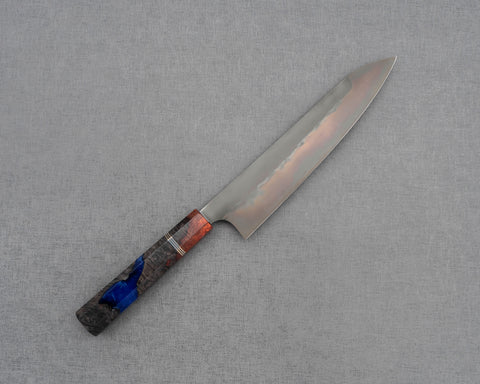
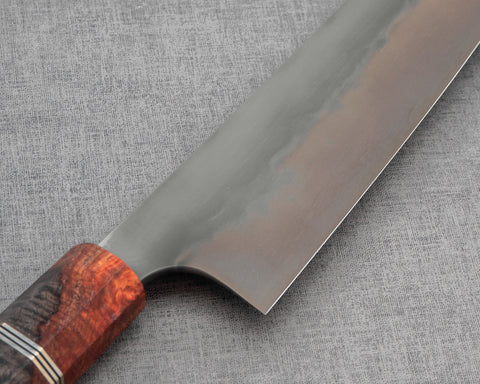
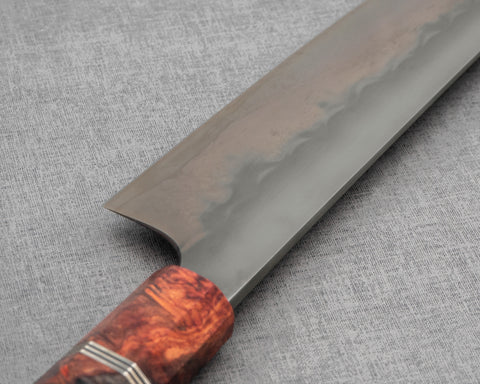
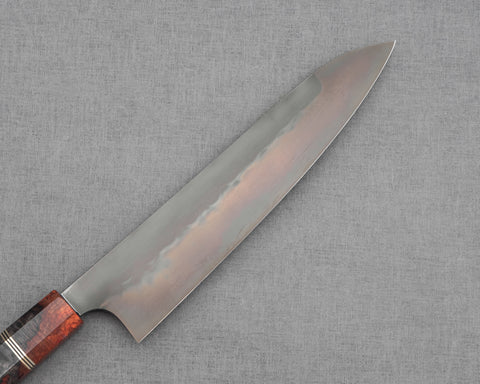
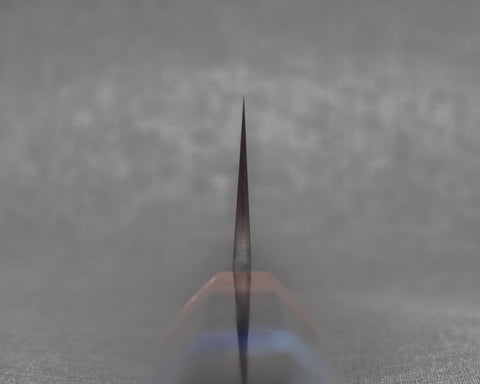
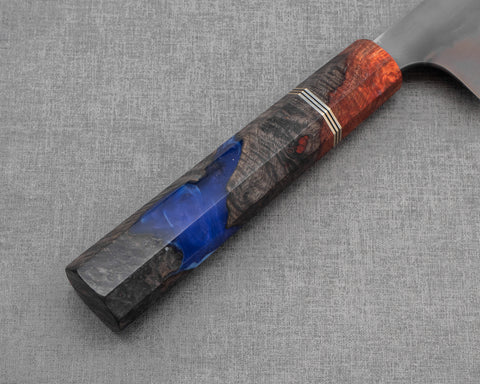
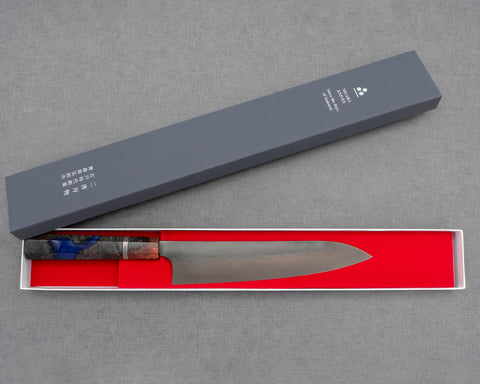
Nigara Shirogami #1 Honyaki 240mm Gyuto with Volcano Stabilized Wood Handle
目前沒有提供取貨服務
A testament to Nigara's pinnacle Honyaki process with Shirogami #1 steel. The blade showcases a striking muddy yellow hue complemented by a beautifully fiery cloud hamon line - a result of intricate process involving the exquisite honyaki treatment paired with expert metallurgy of Nigara Hamono especially its deep knowhow on color etching. Expertly tapered grinding ensures one of the smoothest cuts you'll ever experience. Paired with a Volcano eruption pattern stabilized-wood handle, this knife is both immensely charming and highly appealing.
Spec:
- Origin (Made in): Hirosaki, Aomori Prefecture, Japan
- Brand: Nigara Hamono
- Craftsman: Tsuyoshi Yoshizawa (吉澤 剛)
- Knife Type: Gyuto
- Blade
- Construction: Honyaki
- Grind: Symmetrical Double-bevel
- Hagane (Core Steel): Shirogami #1
- Hardness: 62-63 HRC
- Hand-forged, hand-ground, hand-sharpened
- Blade Length (heel-to-tip): 227mm (8.9")
- Blade Height (at heel): 48mm
- Blade Finishes:
- Nami Ukashi (Ripple)
- Kurosome (Black Eteched)
- Color Etched / Oxidation
- Spine Thickness
- Above heel: 4.8mm
- Middle: 3.0mm
- Handle
- Premium Custom Handle
- Shape: Hachikaku (Octagonal)
- Material: Stabilized Wood
- Ginmaki: Nickel Copper
- Length: 145mm
- Overall Length: 386mm
- Weight: 227g (8.01oz)
About Nigara Hamono 二唐刃物
With 350 years of history, starting from making swords for Tsugaru clan in the early Edo period, Nigara Hamono has passed down knowhow and skills for eight generations. Its 5th generation blacksmith Kunitoshi Nigara was a legendary sword maker, earning a long list of accolades, honorary titles and knighthood. The current (8th) generation blacksmith — Tsuyoshi Yoshizawa is supported by his father Toshiju Yoshizawa who has keen interests in art and music. Nigara’s famous Anmon design is the result of Toshiju’s love for Andy Warhol’s artworks. The family business’ expansion into construction steelworks has given Nigara unmatched access to in-house knowhow when it comes to advanced finishing. All these set Nigara apart as one of the most special knife makers in Japan.
Care:
Shirogami #1 (white #1) steel is one of the popular types of high carbon steel found in Japanese kitchen knives (Wa Knives). It is not stainless, therefore you must wipe your knife dry after each use, in particular the core steel not covered by the stainless cladding. Patina will develop over time, which will appear as “discoloration” on the cutting edge, but that is the nature of carbon steel - not a defect. The stainless cladding covers a large part of the blade, making maintenance easier but still preserving the cutting and sharpening pleasure of the Shirogami core. Avoid cutting into bones, frozen foods, hard fruit pits.
Cutting Surface:
Recommended cutting surface: wood, rubberized boards and high-end composites, and quality plastics such as polyethene make acceptable cutting surfaces, and will help protect and prolong knife’s edge. AVOID glass, metal, countertops, and other rigid, non-forgiving surfaces.
Sharpening:
We recommend sharpening all quality Japanese knives on whetstones, as we believe they yield the best results for your knives.
